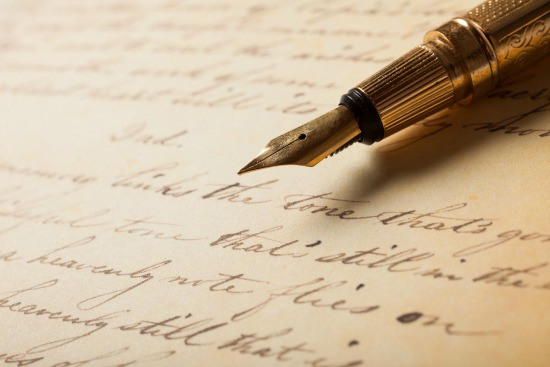
SHARE
READ & LEAVE A COMMENT

We all remember that day: the day we finally “mastered” cursive writing in elementary school. When we walked in the front door after that glorious day, we held our super-wide margin paper in the air like a prized trophy. And maybe, just maybe, our masterpiece of cursive sentences would find it’s rightful place on the refrigerator.
Being able to write is a basic skill in society, and cursive handwriting was one declared the way that “civilized” people wrote all documents. When we visit the National Archives is Washington D.C. to look at the Declaration of Independence, we see a document written in cursive. How did your grandfather write letters to your grandmother? In cursive.
And in both instances, the handwriting shared one trait: it was legible.
Technology is a great thing. It increases our access to incredible information. In instantly connects us to people around the world. It even helps us shoot birds at evil green pigs.
As technology increasingly enters our daily lives, we are losing touch with the “analog” world. I’m a 29 year old millennial, and I haven’t ordered new checks in over 8 years. All of my tax documents are scanned in Evernote, and I can’t tell you the last time I wrote more than a few sentences by hand.
The analog world still has great value in the life of the leader. Of all the ways that analog should be involved in the leader’s daily rhythm, there is one area in particular that is incredibly important:
Yes, we connect and communicate with people in a variety of ways now. Texting, social media, messaging apps, and the antiquated phone call are tools we can use to develop and strengthen relationships.
Despite our high comfort level with technology, a handwritten note carries significant weight in the development of relationships. Receiving a handwritten note, even if it is only a few sentences, can brighten someone’s day. In fact, one business owner tells stories of employees framing those notes.
But how do we get better at it? Here are 3 things to remember that will help you grow significantly.
1. Get a good pen. This sounds silly, but great handwriting and good handwritten notes start with a great instrument. Sure, that Bic pen with your company logo may do just fine, but why not invest in an affordable fountain pen? This is tool that has served leaders well for decades.
2. Have good paper. Again, having the right tools can make a big difference. Does your company have generic branded note cards? Great! Use that. If not, you probably get some through your supervisor. If that is still not an option, make a small investment in generic, high-quality note cards with your name at the top. Just as a fountain pen is a tool that many great leaders use, so is a stack of blank note cards.
3. Be thoughtful. When I write thank you notes, I have a template I try to use. Does this mean every note card is identical? Yes and no. Yes, in the sense that each note has a similar format. No, in the sense that each note is unique and specific to the recipient. Take time to be specific as to why are you sending this note. Maybe they are a new hire and you want to recognize how well they are doing. Maybe they just put in a significant amount of extra time to make sure an event or launch went smoothly. Or maybe they are going through a difficult time personally and need to be encouraged. Whatever the situation, be specific, personable, and thoughtful. Take your time here will result in a huge payoff.
Since relationships are of utmost important for leaders, handwritten notes should become part of a leader’s rhythm of communication. As you look to show your team members that you value their work, begin writing them notes of encouragement. Thank them for something specific. Let them know exactly why you appreciate them as individuals.
SHARE
READ & LEAVE A COMMENT